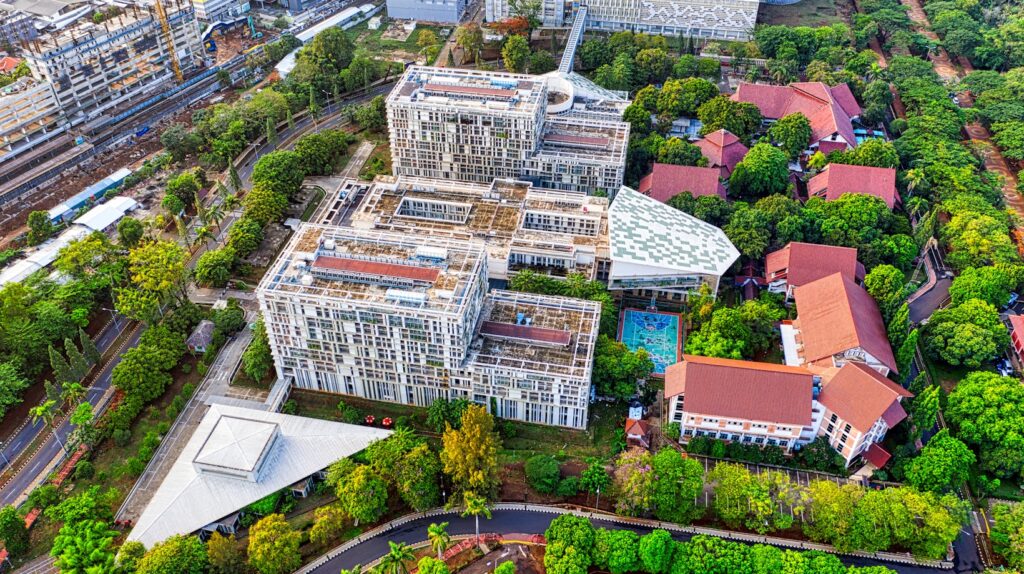
The environmental cleanup of PFAS-contaminated areas is undergoing a technological revolution. Traditional methods are being complemented and it’s time we went further, looking at drones, robotics, and advanced technology. These innovations can be more efficient and effective, offering new hope in tackling this persistent and harmful contamination. In this article, we will highlight a few of them.
Role and Effectiveness in PFAS Cleanup
Drones possess advanced sensors and cameras which help to quickly survey large contaminated areas. They provide detailed maps and data that guide cleanup efforts.
A study by the U.S. Geological Survey in 2022 highlighted the efficiency of drones in environmental monitoring. Drones are a game-changer for spotting pollution. They can quickly zoom over large areas, capturing high-resolution images. Plus, they can reach those hard-to-get-to spots that traditional methods struggle with.
This means we can get a complete picture of contamination, making clean-up efforts much more effective. Drones can fly over rough terrains, water bodies, and other inaccessible locations, capturing crucial data without risking human safety.
The global aerial imagery market is taking off. Valued at $3.3 billion in 2022, it’s projected to soar to $22.8 billion by 2032, with a growth rate of over 21% each year. North America currently leads the pack thanks to its love for drones and established aerial imaging companies.
But keep an eye on Asia Pacific – this region is expected to experience the fastest growth fueled by a drone boom and a growing need for location-based services.
What Role Does Robotics Play in PFAS Remediation?
PFAS cleanup could get the high-tech boost it needs with robots. These programmed machines bring unmatched precision to the job, minimizing human error and protecting workers from exposure to hazardous chemicals. For instance, robots can be used to clean contaminated water bodies by precisely applying cleanup agents and removing pollutants.
Robots are tireless teammates in the fight against pollution. Unlike humans who need breaks, robots can keep working continuously. This nonstop work ethic significantly boosts the speed of cleanup projects. The use of robotics in environmental cleanup would therefore reduce project timelines, making them a cost-effective bet.
How Effective are These Technologies Compared to Existing Traditional Methods?
Technology-driven methods significantly reduce the time required for both assessment and cleanup. Drones and robots will not take quite as long to complete tasks as traditional methods would. For example, a project that might take months to survey using ground crews can be completed in weeks with drones.
One of the most critical benefits of using technology in PFAS cleanup is that it contributes to higher workman safety. Minimizing human exposure to hazardous chemicals is paramount, and drones and robots can handle the most dangerous tasks. This risk reduction protects workers and communities living near contaminated sites.
Upfront costs for these technologies will be high for sure, but they pay off in the long run. You’ll save money on operations down the line, plus get the reward of a healthier environment. The cost savings come from the reduced need for labor, faster project completion, and fewer health and safety incidents.
A study also highlights the economic advantages of using technology in hazardous waste cleanup.
The U.S. Air Force has been a pioneer in using technology to survey and monitor PFAS contamination around its bases. The results have been impressive, with detailed data that has improved the targeting and efficiency of cleanup operations. This initiative has set a precedent for other organizations to follow, demonstrating the practical benefits of integrating technology into environmental remediation efforts.
The U.S. Air Force also addressed PFAS contamination by allocating $9 million for water treatment in Fountain, Colorado. This initiative aims to remove harmful chemicals from the city’s water supply, safeguarding public health.
The funding supports the construction of a state-of-the-art water treatment facility, highlighting the Air Force’s commitment to environmental responsibility and community well-being. This significant investment underscores the military’s proactive approach to mitigating the impacts of PFAS contamination.
Addressing Firefighting Foam Cancer Risks
One of the critical areas where these technologies are making an impact is in addressing the risks associated with firefighting foam cancer. The condition is more common than you imagine, and it is serious as well.
According to TorHoerman Law, firefighting foams containing PFAS chemicals have been linked to various cancers, prompting widespread concern and legal actions.
The lawsuits specifically cite an increased risk of prostate, testicular, kidney, and pancreatic cancers. By using drones and robotics, the cleanup of harmful chemicals is expedited, reducing the exposure risk for firefighters and communities.
How Can Emerging Technologies Revolutionize PFAS Cleanup In The Coming Years?
The continued advancement in drone and robotic technologies promises even greater efficiency and effectiveness in the cleanup of PFAS-contaminated sites. Researchers are developing more sophisticated sensors and AI-driven robots that can adapt to different environments and contamination levels.
To help develop better ways to clean up PFAS contamination, a project funded by SERDP (Strategic Environmental Research and Development) created a helpful guide. This guide outlines what to pay attention to when evaluating treatment technologies, like:
- See and understand which solutions have the most potential for success.
- Figure out what needs to be done to improve this technology and get it ready for wider use.
- See if this technology is ready to be used outside the lab in an actual cleanup project.
- Find out what parts of this technology might not work as well as expected when used for real.
Government and regulatory bodies are increasingly recognizing the benefits of these technologies. Guidelines now include recommendations for using drones and robotics in environmental cleanup, reflecting a shift towards modernizing remediation practices.
Collaboration between tech companies, environmental agencies, and research institutions is driving innovation. Joint efforts are focusing on creating more robust and versatile technologies that can handle a broader range of contaminants and conditions.
While these techniques seem to work well on long-chain PFAS in the lab, it’s still unclear how effective they’ll be in real-world situations. Breaking down PFAS can sometimes create shorter-chain PFAS molecules that are even more persistent in the environment.
Embracing drones, robotics, and advanced technology is transforming the environmental cleanup landscape, making it faster, safer, and more effective. These innovations not only enhance our ability to manage PFAS contamination but also pave the way for more sustainable environmental practices.
The future’s looking bright. As tech keeps getting better, it could mean a cleaner planet and healthier lives for everyone.













